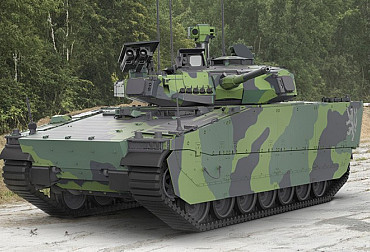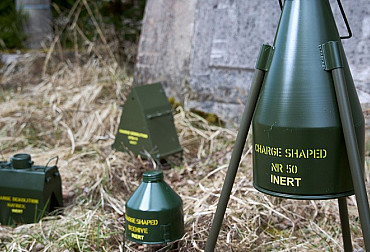US National Security and Defence Strategy and European Defence
The administration of US President Joe Biden has recently released two of the most important documents in the security framework – the National Security Strategy and the National Defence Strategy. These documents set the course for US defence and security under the current administration.
The National Security Strategy, issued by the White House, summarizes security priorities and, in part, foreign policy. The National Security Strategy is the overarching document from which the National Defense Strategy and the U.S. Military Strategy, which is a classified document, are then derived.
 Picture: The White House's National Security Strategy summarizes security and, in part, foreign policy priorities. (illustration photo) | Robyn J. Haake / U.S. Army
Picture: The White House's National Security Strategy summarizes security and, in part, foreign policy priorities. (illustration photo) | Robyn J. Haake / U.S. Army
The National Security Strategy sees the People's Republic of China (PRC) as the only American rival that seeks to transform the international order and has the capabilities to do so. According to the document, the PRC seeks to establish a sphere of influence in the Indo-Pacific and aims to become a global hegemon. However, the US-PRC rivalry is not only in the Indo-Pacific, but globally. The authors of the document consider the next ten years to be a crucial time for the US-PRC rivalry. As regards Taiwan, the document mentions a commitment to the 'one-China policy' and relations with Taiwan are governed from the US side by the relevant agreements with the PRC and US law. At the same time, however, the US wants to support Taiwan and expand its self-defence capabilities. According to the document, the Indo-Pacific is the centre of the 21st century. It is in the interest of the US to keep the region free and open, and therefore the US will focus its security and foreign policy attention on the region.
Russia is seen in the document as an immediate threat to international security and stability. Together with its allies in the Alliance, the US wants to strengthen defence and deterrence capabilities, particularly on the Alliance's eastern flank. The document mentions that there is no change in the US commitment to defend the entire Alliance. While this commitment remains in place, the document explicitly mentions that the US will rely on European allies to take on greater responsibility in building up European defence.
The National Defence Strategy then defines priorities for the US approach to defence. The Pentagon's priorities are to defend against the growing threat posed by the PRC, and in the event that conflict breaks out, the Pentagon will prioritize conflict with the PRC in the Indo-Pacific over conflict with Russia in Europe. In addition, the Chinese People's Liberation Army is modernizing and building its capabilities in the space and cyber domains. At the same time, it is focused on denying US forces the ability to maneuver freely and preventing the defense of US interests in the region. The US therefore wants to work with Japan to modernize their US-Japan alliance and further strengthen the AUKUS and Indo-Pacific Quad groupings, among others.
In Europe, according to the National Defence Strategy, the US commitment to defend the Alliance's territory still applies. The Pentagon wants to continue to work with European allies and partners to strengthen critical capabilities and enhance overall capabilities on the eastern flank of the Alliance. On the other hand, the document states that the US wants to focus more on supporting capabilities, while European allies will upgrade their conventional capabilities. On the nuclear front, the U.S. wants to modernize its assets deployed in Europe and work with allies involved in the nuclear-sharing program to introduce the F-35A aircraft and its ability to carry nuclear weapons.
Under the section entitled Missile Defense Review 2022, the Pentagon then mentions China's growing ballistic and hypersonic missile capabilities. The Pentagon argues that the PRC is catching up to the US in this area and the growth of these capabilities will continue. On the Chinese side, there are also upgrades to command, control, and reconnaissance systems, which may significantly increase the accuracy of Chinese attacks with the aforementioned missiles in a future conflict.
On the other hand, in the case of Russia, the US Pentagon cites the thousands of missiles fired at Ukraine and the economic sanctions that may lead to Russia not having the capacity to continue producing these weapons systems in the future.
What, then, do the two strategic documents imply for Europe and the European members of the Alliance? The US wants to continue to focus on the PRC as its biggest rival and to prioritise any potential conflict with the PRC over a conflict with Russia in Europe. So there is really no choice for European states but to stop relying on the US and start building up European defences and capabilities so that we are able to deter Russia ourselves. Indeed, by unleashing American capabilities in Europe, we can also help our allies and partners in Asia in their competition with the PRC.





















